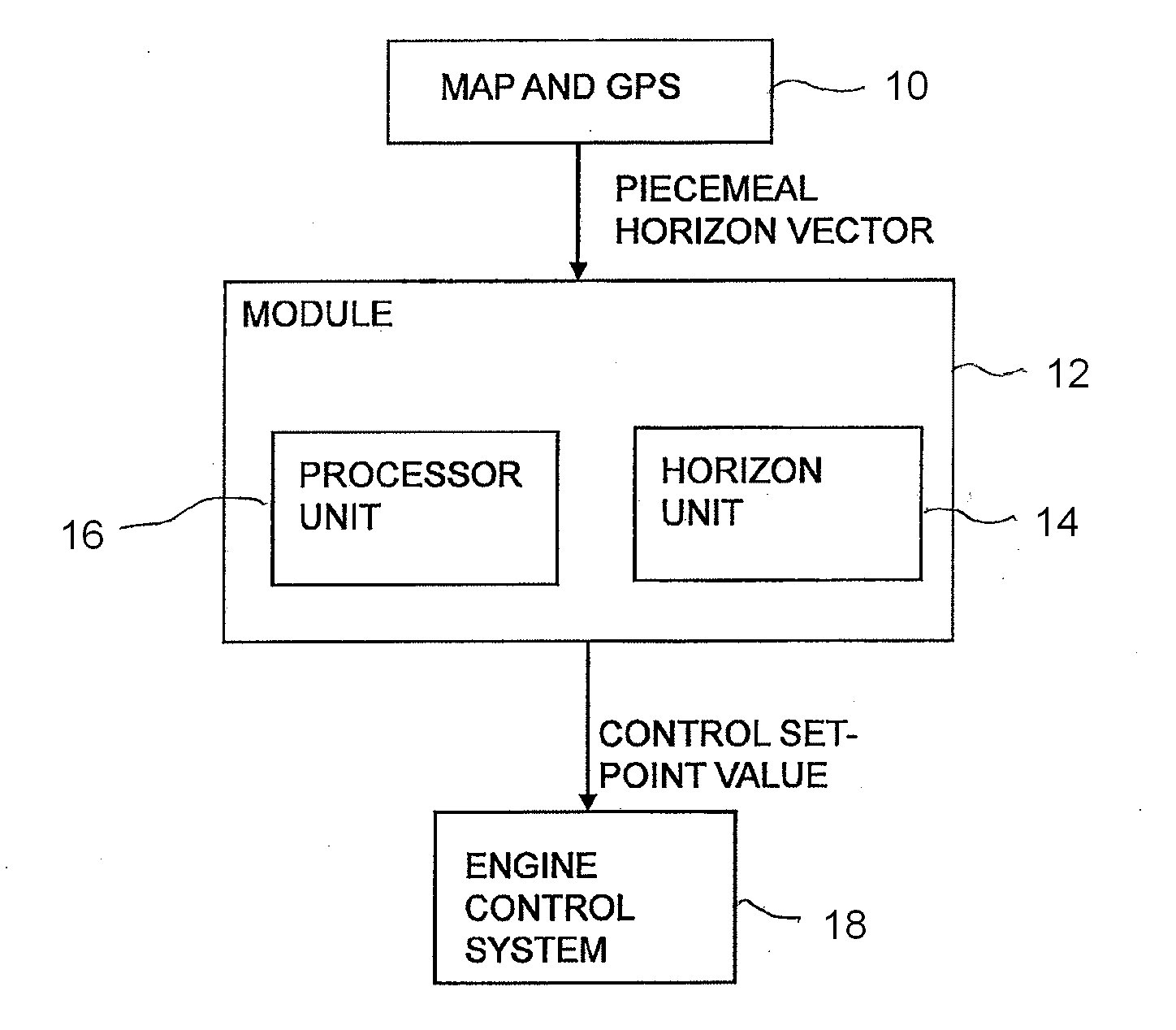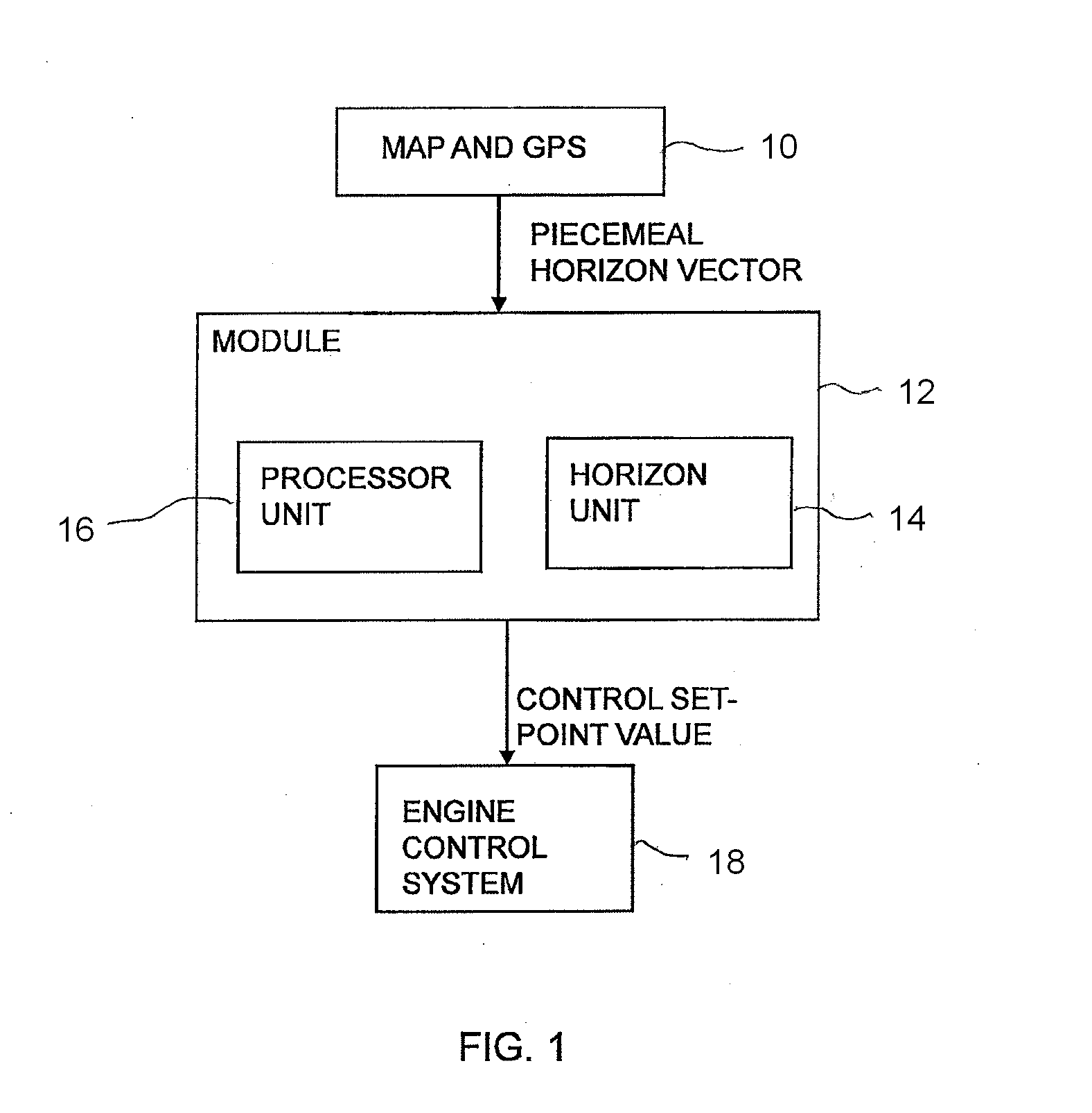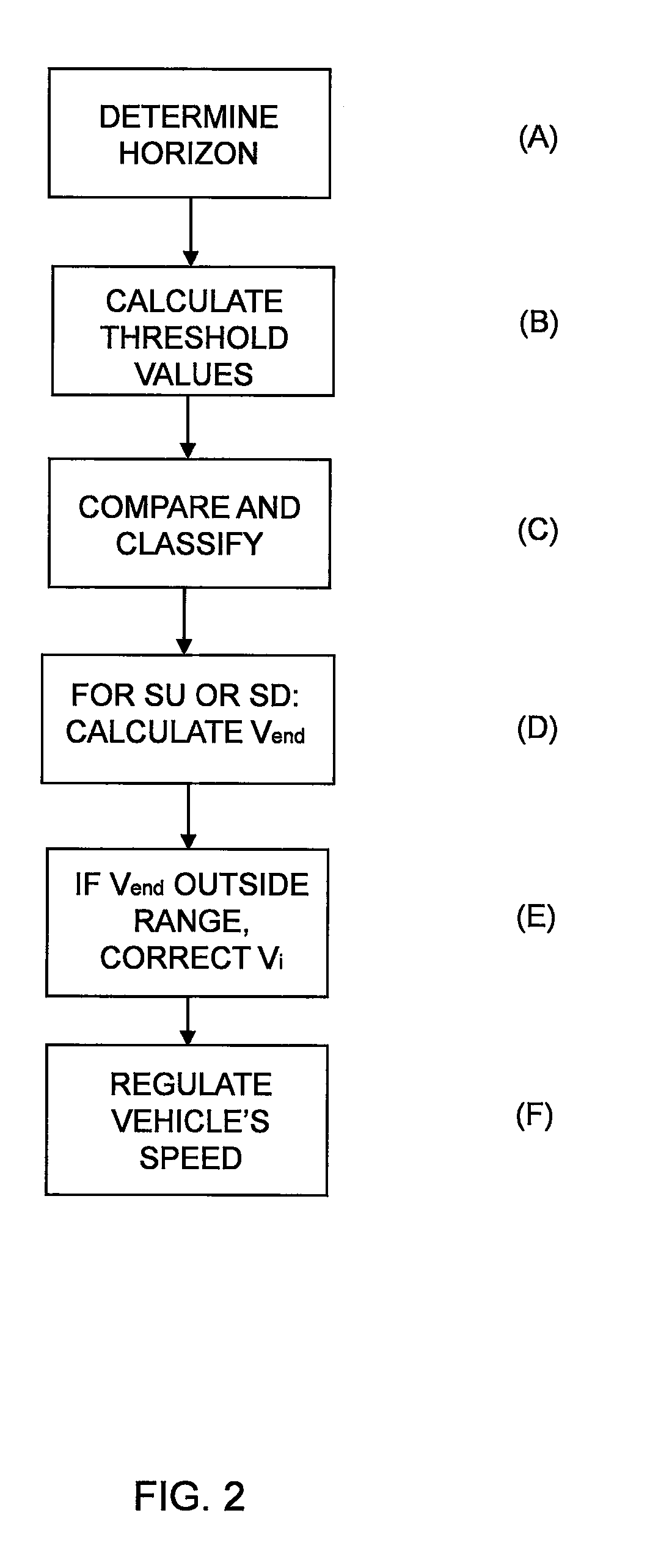Method and module for controlling a velocity of a vehicle
a technology for regulating the speed of a vehicle and a module, which is applied in the direction of process and machine control, instruments, navigation instruments, etc., can solve the problems of fuel-intensive way of running the vehicle, and achieve the effect of fast and reliable generation of speed set-point values, robust and computationally effective algorithms
- Summary
- Abstract
- Description
- Claims
- Application Information
AI Technical Summary
Benefits of technology
Problems solved by technology
Method used
Image
Examples
Embodiment Construction
[0036]Information about a vehicle's itinerary can be used to regulate its speed in anticipation in order to save fuel, increase safety and enhance comfort. Topography greatly affects the control of, in particular, the driveline of heavy vehicles, since much more torque is required uphill than downhill and to make it possible to climb some hills without changing gear.
[0037]The vehicle is provided with a positioning system and map information, and position data from the positioning system and topology data from the map information are used to construct a horizon which illustrates the nature of the itinerary. In the description of the present invention, GPS (Global Positioning System) is indicated for determining position data for the vehicle, but it should be appreciated that other kinds of global or regional positioning systems are also conceivable to provide the vehicle with position data, e.g. systems which use a radio receiver to determine the vehicle's position. The vehicle may a...
PUM
 Login to View More
Login to View More Abstract
Description
Claims
Application Information
 Login to View More
Login to View More - R&D
- Intellectual Property
- Life Sciences
- Materials
- Tech Scout
- Unparalleled Data Quality
- Higher Quality Content
- 60% Fewer Hallucinations
Browse by: Latest US Patents, China's latest patents, Technical Efficacy Thesaurus, Application Domain, Technology Topic, Popular Technical Reports.
© 2025 PatSnap. All rights reserved.Legal|Privacy policy|Modern Slavery Act Transparency Statement|Sitemap|About US| Contact US: help@patsnap.com



